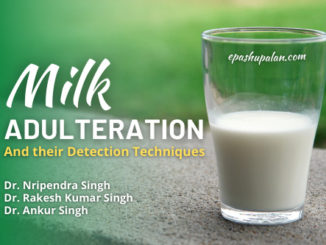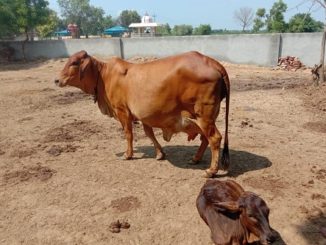India is one of the world’s largest food producers where processed food is merely 8% of the total produce. However, the country’s food processing market has immense potential in terms of production, consumption as well as export and import prospects. In comparison to other countries, Indian processed food industry has comparative advantage in terms of easy availability of manpower and raw materials, untapped market of over one billion populations, government initiatives in the form of loans, technical support, tax holidays etc. Hence the country is set for big leap in processing sector and in this age of globalization the revolution is knocking at the door.
Introduction
Food processing sector has been identified as one of the priority sectors under “MAKE IN INDIA”. At present the processing industry is basically export oriented although the domestic market of processed food is keeping pace with the change in life style and income status due to economic boom experienced in the country. Indian food processing industry contributes 14% of manufacturing Gross Domestic Product (GDP) with a share of Rs 2,80,000 crores, of this, the unorganized sector contributes more than 70% of the production in terms of volume and 50% in terms of value. Country has all the requirements for a head-start in the processing industry; it is number one in milk, ghee, pulses, ginger, bananas, guavas, papayas, mangoes and spices production, as well as in livestock population, ranks second in production of cereals, fruits and vegetables, and tea. Regarding total egg production it ranks third and in total poultry meat production it is at number five. The development achieved have not been matched properly in terms of marketing chain for better supply and in application of technologies for better processing, preservation, packaging, storage and retailing. A large part of annual food produced is wasted due to lack of post harvest technology and organized marketing practices. The result is that farmers suffer either because of spoilage of their produce or due to low market price as a consequence of unorganized market, but gone are the days of apathy, now we are living in a liberal world in the age of globalization. Food processing provides an opportunity to utilise excess production efficiently. Not just from a growth perspective, food processing is also important from the point of reducing food waste. In fact, the United Nation estimates that 40% of production is wasted. Similarly, the NITI Aayog cited a study that estimated annual post-harvest losses of close to Rs 90,000 crore. With greater thrust on proper sorting and grading close to the farm gate, this wastage could also be reduced, leading to better price realization for farmers. The country is experiencing the presence of global giants and top Indian enterprises in the arena of processing sector such as; Nestle India Ltd., Amul India, Cadbury’s India Ltd., Dabur Foods, Pepsico, Hindustan Liver Limited, Godrej Foods, McDonalds etc.
Future Prospects
Food Processing Industry in India is increasingly seen as a potential source for driving the rural economy as it brings about synergy between the consumer, industry and agriculture. Ministry of food processing has a vision to become food factory of the world by 2025, when the level of processing would be 20% from the present one of merely 8%. The growth of the food processing industry is crucial for greater social and economic development of the country, considering it is the first organized linkage between the farm and shelf. This is particularly relevant in an emerging country like India, where equitable growth is a primary concern for the Government.
The model policy outlines various initiatives that the state can adopt like promotion of food processing clusters, development of food parks, entrepreneurship promotion, establishing skilling centres, supporting FPOs/FPCs for setting up of Primary Processing Units, etc. All these initiatives are expected to contribute significantly in tackling several developmental concerns such as prevention of wastage of food, improved nutrition, increasing employment opportunities, hence increase in socio economic condition of the people of the country. This would also contribute towards the goal of doubling farmers’ income by 2025. Considering that huge investments would be brought in by the growth of the food processing industry and the accompanied employment that the sector is projected to generate, VAT/SGST refunds is suggested to be provided.
Policy Support
Liberalization in the year 1991 has opened the market for multinational companies hence the government started formulating policies to attract the foreign investors. Food processing and agro industries have been kept on priority with a number of relaxations and incentives. Foreign direct investment up to 100% is permitted under the automatic route in the food infrastructure, like food park, cold chain/ware housing etc. Industrial license is not required for almost all of food processing industries except for some items like; beer, portable alcohol, wines, cane sugar, hydrogenated animal fats and oils etc. and items meant for exclusive manufacture in the small scale sector. However, up to 24% foreign equity is allowed in small-scale industries. Even FERA (Foreign Exchange Regulation Act) regulations have been relaxed to increase investment and expansion by large companies.
There has been substantial reduction in export and import duties and many processed food items are completely exempted from excise duty. To promote export activity custom duty rates have been reduced on plant and equipment’s as well as on raw materials. In fact food-processing industry is one of the thrust areas identified for exports. Free trade zones and export processing zones have been set up with all necessary infrastructures to infuse the in-puts required to boost up the export activities. Even the setting up of 100% export oriented units is being encouraged. All profits from export sales are totally free from corporate taxes. Profits from such export are also exempted from minimum alternate tax.
Processing sectors
At present, India’s agricultural exports predominantly consist of raw materials, which are then processed in other countries, again indicating the space to move up the value chain. During the last 5 years ending 2017-18, food processing sector has been growing at an average annual growth rate (AAGR) of around 8.41 per cent as compared to around 3.45 per cent in agriculture at 2011-12 prices. Despite India being one of the largest producers of agricultural commodities in the world, agricultural exports as a share of GDP are fairly low in India relative to the rest of the world. The same proportion is around 4% for Brazil, 7% for Argentina, 9% for Thailand, while for India it is just 2%. Important sections identified in the processing industries are milk, meat, poultry, fish, fruit and vegetable processing, packaged and convenient foods, grain processing, alcoholic beverage and soft drink etc given in table 1. The value of processed food exports during 2018-19 was of the order of US $35.30 billion accounting for about 10.69 per cent of India’s total exports. Food processing industry is one of the major employment intensive segments constituting 12.43% of employment generated in all registered factory sector in 2016-17.
Table 1. Major Food Processing Sectors in India
| Sectors | Production |
| Milk | 176.3 MT |
| Meat and Poultry | Total : 7.4 MT
Poultry Meat: 3.5 MMT Buffalo: 1.4 MT Goat: 1.0 MT Egg: 88.14 billion eggs |
| Marine product | 13.7 MT |
| Fruits and Vegetables | 282.5 MT |
| Grain processing | 270.1 MT |
| Other food | Aerated soft drinks: 2,645 million liters
Packaged drinking water: 934.78 million liters Packaged foods Alcoholic beverages |
With the milk production of 176.35 MT (Million Tones) India is unchallenged at number one position and is holding this rank since 1998. When the world milk production registered a growth of merely 1.1%, India performed much better with 4% growth. The Economic survey says: “Of the total milk produced in rural areas around 52 per cent is the marketable surplus. Of this surplus less than half of the milk sold is handled by the organized sector comprising of dairy cooperatives and private dairy companies and the rest by the unorganized sector.” The ministry of food processing is promoting organized dairy processing to meet the demand of processed dairy products. Steps have been taken from government side to boost up the Indian dairy exports by providing financial assistance.
The total meat production of the country is 7.4 MT; major contributors are beef, cara-beef, mutton, chevon, pork and poultry meat. Out of this production some portion is converted into value added products like sausage, ham, bacon, kababs and meat balls etc. The value of total export of animal products in the year 2015-16 was Rs. 27610 crores where the major contribution was from cara-beef (73.74%). Regarding poultry sector, there are seven modern integrated poultry processing plants and a good number operating at very small level. There are around 3600 licensed slaughterhouses and nine modern abattoirs to take care of slaughter activities of meat animals. Under, Meat Food Products Order (MFPO) we have 171 licensed meat processing units, the restaurants dealing in processing activity of meat and serving in their premises do not come under purview of MFPO.
Fisheries are a fast-growing sector in India, which provides nutrition and food security to a large population of the country besides providing income and employment to more than 14.5 million people. India is the second largest fish producer in the world with a total production of 13.7 million metric tonnes in 2018-19 of which 65 per cent was from inland sector. Almost 50 per cent of inland fish production is from culture fisheries, which constitutes 6.5 per cent of global fish production. The sector has been showing a steady growth in the total gross value added and accounts for 5.23 per cent share of agricultural GDP. Fish and fish product exports emerged as the largest group in agricultural exports and in value terms accounted for `47,620 crore in 2018-19. Common marine produce of India are prawns, shrimps, tuna, mackerel, lobster, etc. Important processed fish products include fish sausages, surimi, cutlets and dry fish, canned fish etc. There are more than 400 fish processing units and 369 freezing units with the daily processing capacity of 10266 tons. Hence a great potential is waiting for the global entrepreneurs in this era of liberal economy.
The production of fruits and vegetables in the year 2015-16 was 90.2 and 169.1 MT; respectively, however only 2% of the produce was actually processed. The numbers of licensed fruit/vegetable processing units in the country are 5198. During 2018-19, India exported fruits and vegetables worth Rs. 10236.93 crores which comprised of fruits worth Rs. 4817.35 crores and vegetables worth Rs. 5419.48 crores. The important processed food item categories are canned fruits and vegetables, pickles, chutneys, juices, dehydrated and frozen fruits/ vegetables. A large number of units are in cottage scale having capacities up to 250 tonnes/annum where as big units under multinational companies may have a capacity around 30 tonnes/ hour. India’s grain production was around 275 MT; in 2017-18 which is only less than the China. Indian Basmati rice has unique reputation in the world market. Country has a milling capacity of around 200 million tones. The export of the floriculture in the year 2018-19 was 19726.57 MT; having the value of Rs.571.38 crores.
India is the third largest egg producer and fifth largest poultry-meat producer in the world. Total egg production of the country is 3.49(74 billion) MT; whereas total poultry meat is 3.8 MT; In comparison to the meat products where a growth rate of 10% is registered, the growth rate of eggs and broilers are 16% and 20% respectively. Poultry industry has bright future in the export sense and is already exporting egg powder, albumin powder, frozen egg, chicken meat products to European countries and other countries like Oman and Maldives. There are more than 100 layers and around 300 broiler hatcheries operating in the country. Only 5 egg powder plants are there which are not sufficient to meet the domestic and export market demand. Hence there is enough opportunity for the investors in this sector.
Barley, maize, potato, grapes and molasses are the most suitable raw matchers for the alcoholic beverages. The production of beer and wine in the year 2006 was 2.9 lakh tones. The beer market in India is valued around Rs. 7000 millions per annum. The government has relaxed its terms and conditions in the retail market of beer, hence there has been big boom in its market cover. Indian giants of this sector are going for overtake of foreign companies indication the prowess of the country on this sector.
Challenges
The challenges in the processing industry are not least along with the prospects. The biggest challenge in the present scenario is the lack of infrastructure. The infrastructure requirements in the processing sector are different and different levels. These challenges need to be addressed in different phases starting from the points the product have been produced at the farms till they reach their final destination. The real objective of processing industry would only be achieved when there will be least wastage of food products and consumer gets safe and healthy food materials.
The food materials produced at farms are highly susceptible to spoilage due to microbial attack, pest infestation, biochemical reactors and enzymatic changes. Despite the large production of food products in India, post harvest losses are of major concern. A nation-wide study on quantitative assessment of harvest and post-harvest losses for 46 agricultural produce in 106 randomly selected districts carried out by CIPHET, Ludhiana has estimated harvest and postharvest losses of major agricultural produce at national level to be of the order of Rs. 44,143 crore per annum at 2009 wholesale prices. The repeat study in March 2015 has estimated that annual value of harvest and post-harvest losses of major agricultural produces at national level was at Rs. 92,651 crore. The only way to prevent the wastage of these food items is by applying the techniques of post harvest management practices adopted are processing the products just after it has been produced on farm followed by packaging, storage, transport and retailing etc. These practices reduce the wastage by inhibiting the spoilage changes as well as extending the self life of products. However, all the processing technique implied here does affect the nutritional quality and sensory properties of the products and hence there is always a compromise in terms of above attributes although we benefit in terms of shelf life and wastage reduction.
The key issue facing the food and agribusiness sector is the viability and scalability factor, which in turn is linked to absence of efficient food supply chain mechanics effectively integrating backward and forward linkages in a seamless manner. With the right policy in place investment is expected to flow into integrating the backward linkages in to the supply chain and thereby having an impact on farmer incomes.
Taking on the issues of food laws, taxation system, marketing channels, cold chain, consumer acceptance of processed items, we are far behind than the developed nations of the world. Although the things are improving but there is a need to pace up or speed up the processes like the development of cold chain in market, formation of links between the government institutes and industry, orientation of food laws to serve the purpose best, consumer awareness regarding advantages associated with processed foods etc.
The country has a big number of retail outlets but it lacks anything that can be termed as retailing industry. One of the survey shows that 96% of the country’s total retail outlets are smaller than 500sq ft in area, which is a pathetic status of the retailing sector. It has been claimed that India’s per capita retailing space is only about 2sq ft as compared to that of USA where it is 16sq ft. Retailing in India is completely unorganized and development of and organized retailing industry is mandatory to cater the processed food products.
Conclusion
India has traveled a long way after achieving its independence in 1947. From a “starving nation to exporting nation” this 72 years of journey, self-explains the country’s ability. To feed more than one billion populations and then going for exporting its food products is something that we should feel proud of it. But all this has not been achieved over nigh nor by any miracle but by the effort of the farmers, technical inputs of institutes and a systematic planning as well as financial assistance from the government. But since a major portion of this produce is wasted regularly and the answer to this problem is post harvest management where by “processing the produce” is the most important one. For the processing sector the effort being made at different fronts will certainly produce a drastic change in the Indian Food Industry in time to come. The National Skill Development Corporation (NSDC) estimated the need to skill 17.8 million persons in the food processing industry by 2022. The policy of ministry for growth of food processing Industry sector has predicted that in 2025 processing levels of perishables will increase from 8% to 20%, there will be an increase in value addition from 20% to 34% and the global trade share would become 3% from its present status of 1.5%.







Be the first to comment